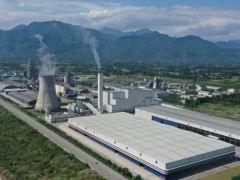据今日油价4月14日报道,在经济强势反弹的背景下,欧佩克将2021年石油需求上调每天19万桶,高于上月预期。
欧佩克4月份月度石油市场报告显示,预计2021年全球石油需求全年平均为9646万桶/天。这一数字高于上月报告中的9627万桶/天,也高于最新估计的9051万桶/日的2020年石油需求。
在3月的报告中,欧佩克预计2020年全球石油需求为每天9000万桶。
此前,该组织实际领导人沙特阿拉伯在欧佩克会议上表示,其使用的石油需求数据偏低,全球实际石油需求将更高。
作为欧佩克中唯一真正摇摆不定的产油国,沙特阿拉伯在欧佩克内部仍有巨大的影响力。根据这些数据,欧佩克最终决定从2021年5月开始逐步提高石油产量。
无论何种原因,欧佩克对石油需求的乐观预期必然会对油价产生积极影响。
欧佩克在指出:“支持经济反弹的是刺激计划、放松出行限制措施和加速疫苗推广,特别是在经合组织地区,经济反弹比上月预期的更为强劲。”
在疫苗方面,据估计有20%的美国人已经完成了接种,欧佩克认为这是对石油需求持乐观态度的原因之一。在以色列,高达57%的人口已经完成了接种。但总体而言,世界上只有不到10%的人接受了单次注射。一些国家预计到2021年底无法达到20%的水平。
不过,2021年上半年的经济状况仍不容乐观。
尽管欧佩克调整了全年的石油需求预期,并相应地调整了产量,但它下调了今年上半年的石油需求预期。欧佩克降低其上半年预期的原因似乎与它提高全年石油需求预期的原因相似:欧洲地区的新冠肺炎疫情防控措施,以及非经合组织地区疲软的2021年第一季度需求数据。
欧佩克在其报告中发出了警告:“2021年,受疫情的影响,风险仍将居高不下。包括新能源政策和大规模货币和财政刺激措施的有效性,这些都将在短期内影响石油需求。”
在欧佩克石油供应方面。尽管2021年上半年的数据显示石油需求低于此前预期,但欧佩克2021年第一季度的实际产量有所增加。欧佩克今年第一季度的产量为2513.8万桶/天,而上一季度为2494.1万桶/天。
季度增产超过10万桶/天的国家都是目前欧佩克减产协议的豁免国。
阿联酋的产量也比上一季度增加了9.6万桶/天。伊拉克是第五大增产国,日增量为6.4万桶,而按照减产协议的规定,伊拉克的产量应该低于配额,以弥补此前的过剩供应。
值得庆幸的是,与2020年第四季度相比,摇摆产油国沙特阿拉伯2021年第一季度的平均日产量减少了52.2万桶。
3月份,而沙特阿拉伯的原油产量再次大幅下降,达到809万桶/天。总体而言,欧佩克3月份的产量比2月份高出20.1万桶/天,达到2504.2万桶/天。相比之下,2020年的平均日产量为2564.5万桶。
在上一次欧佩克+会议同意放松减产配额后,欧佩克的产量预计将在未来几个月增加。在第一批增产中,预计将增加50万桶/天,一半来自欧佩克+产油国,一半来自沙特阿拉伯的自愿减产。然而,沙特阿拉伯已经暗示产油国们将用灵活的生产配额来满足需求。
王佳晶 摘译自 今日油价
原文如下:
OPEC’s Bullish Demand Data Sparks Hope Of New Oil Rally
OPEC has revised its 2021 oil demand upward to stand 190,000 bpd higher than last month's estimates, on the back of an economic rebound that surpasses last month's outlook.
Global 2021 oil demand is now expected to average 96.46 million bpd for the full year, according to OPEC's latest projects included in its April Monthly Oil Market Report. That figure is up from 96.27 million bpd in last month's report, and up from the newly estimated 2020 oil demand figure of 90.51 million bpd.
In last month's report, OPEC had estimated 2020 global oil demand at 90.39 million bpd.
Behind the Curtain
This upward revision comes after the group's de facto leader, Saudi Arabia, told the group at the last OPEC meeting that the oil demand figures they were using were too low and that actual global oil demand would be higher.
As the only true swing producer in the group, Saudi Arabia still has enormous sway within OPEC.
The group ultimately decided to gradually lift oil production starting in May 2021 based on these figures, which it did not disclose at the time.
Whatever spark, an optimistic oil demand projection by OPEC is bound to have a positive effect on prices.
For its April MOMR, OPEC cited a "stronger economic rebound than assumed last month." Supporting this economic rebound, OPEC said, were stimulus programs, easing of Covid-19 lockdown measures, and accelerated vaccine rollout, particularly in the OECD region.
On the vaccine front, which OPEC cites as cause for oil demand optimism, an estimated 20% of the U.S. population has been fully vaccinated. In Israel, a whopping 57% of the population has been fully vaccinated. But overall, less than 10% of the world has received a single dose. Some countries are not expected to reach the 20% threshold by the end of 2021.
The Sad Truth about H12021
While OPEC has adjusted up its oil demand projections for the whole year—and adjusted its production to match—it revised downward its oil demand projections for the first half of this year.
Its reasons for lowering its H12021 projections seem to mimic the reasons it raised its full-year oil demand projections: Covid-19 measures in OECD Europe, and sluggish—actual—Q1 2021 demand data in the non-OECD region.
And OPEC raised another caution flag in its report: "Risk will remain high during 2021, subject to COVID-19 developments, and the pace of reaching heard immunity targets." OPEC also pointed out additional risks that included new energy policies and the "effectiveness of the large scale monetary and fiscal stimulus measures"—all of which will impact oil demand in the short-term.
OPEC production
While the data for the first part of 2021 showed worse oil demand than previously expected, OPEC's actual Q1 production for 2021 increased. OPEC's first-quarter production this year was 25.138 million bpd, compared to the previous quarter's 24.941 based on OPEC's secondary source figures.
The countries showing increases in production of more than 100,000 bpd quarter on quarter are all the countries that are currently exempt from OPEC's production cut agreement.
The UAE also increased production by 96,000 bpd quarter over quarter. Iraq represented the fifth-largest increase at 64,000 bpd, while it was supposed to be producing under its quota to make up for previous overages as spelled out in the production cut agreement.
Thankfully for OPEC, swing producer Saudi Arabia produced an average of 522,000 barrels per day less in Q1 2021 compared to Q4 2020.
For the month of March, Saudi Arabia was, again, saw the largest decrease, bringing its March production to 8.090 million bpd. Overall, OPEC’s March production was 201,000 bpd higher than February, at 25.042 million bpd.
This compares to an average 25.645 million bpd across all of 2020.
OPEC’s production is expected to increase in the coming months after the last OPEC+ meeting agreed to ease up on the production cut quotas. In the first tranche of increases, an additional 500,000 bpd is expected—half from OPEC+ and half from Saudi Arabia’s voluntary cuts. Saudi Arabia, however, has signaled to the market that the group will be flexible with its production quotas to meet demand, wherever it may be.
免责声明:本网转载自其它媒体的文章,目的在于弘扬石化精神,传递更多石化信息,并不代表本网赞同其观点和对其真实性负责,在此我们谨向原作者和原媒体致以敬意。如果您认为本站文章侵犯了您的版权,请与我们联系,我们将第一时间删除。







